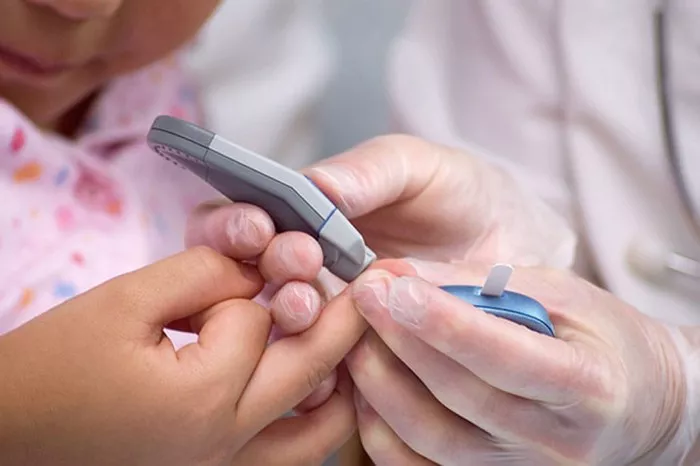The A1C test, also known as the hemoglobin A1C or glycated hemoglobin test, is a critical tool in the management of diabetes. It provides a snapshot of a person’s average blood glucose levels over the past two to three months. Understanding A1C levels is essential for individuals with diabetes, healthcare providers, and anyone at risk of developing diabetes. This article explores what constitutes a dangerous level of A1C, the implications of high A1C levels, and strategies for management.
Understanding A1C Levels
A1C levels are expressed as a percentage. This percentage reflects the amount of glucose that has attached to hemoglobin, the protein in red blood cells that carries oxygen. The higher the A1C percentage, the higher the average blood glucose levels have been over the past few months.
A1C Levels and Diabetes Classification
The American Diabetes Association (ADA) classifies A1C levels as follows:
Normal: A1C below 5.7%
Prediabetes: A1C between 5.7% and 6.4%
Diabetes: A1C of 6.5% or higher
For individuals diagnosed with diabetes, the goal is typically to maintain A1C levels below 7%. However, personalized targets may vary based on individual circumstances.
Why Is A1C Important?
Monitoring A1C levels is vital for several reasons:
Long-Term Glucose Control: The A1C test helps individuals and healthcare providers assess long-term glucose control, providing insight into the effectiveness of diabetes management strategies.
Risk Assessment: Higher A1C levels are associated with an increased risk of diabetes-related complications, such as cardiovascular disease, nerve damage, kidney damage, and vision problems.
Treatment Adjustment: Regular A1C monitoring allows for timely adjustments in medication, diet, and lifestyle changes to better manage diabetes.
What Constitutes a Dangerous Level of A1C?
A dangerous level of A1C typically refers to values that indicate poor blood glucose control and increased risk of complications.
Dangerous A1C Levels
A1C of 8% or Higher: An A1C level of 8% or higher is generally considered dangerous, indicating that average blood glucose levels are elevated. This level significantly increases the risk of complications, including cardiovascular disease, neuropathy, nephropathy, and retinopathy.
A1C of 9% or Higher: An A1C level of 9% or higher is even more concerning. It suggests chronic hyperglycemia, leading to a higher likelihood of severe complications, including diabetic ketoacidosis (DKA) and hyperglycemic hyperosmolar state (HHS).
A1C of 10% or Higher: At this level, the risk of acute complications increases dramatically. Individuals may experience symptoms such as excessive thirst, frequent urination, fatigue, and blurred vision.
A1C of 12% or Higher: An A1C level of 12% or higher indicates severely uncontrolled diabetes. Immediate medical intervention is often necessary to prevent life-threatening complications.
Understanding the Risks of High A1C Levels
High A1C levels can lead to a range of serious health complications, particularly when sustained over time. These risks include:
Cardiovascular Disease: High blood glucose levels contribute to the development of atherosclerosis, increasing the risk of heart attack and stroke.
Neuropathy: Chronic high blood sugar can cause nerve damage, leading to peripheral neuropathy, characterized by numbness, tingling, and pain in the extremities.
Nephropathy: Elevated glucose levels can damage the kidneys, leading to diabetic nephropathy, which may result in kidney failure and the need for dialysis or transplantation.
Retinopathy: High A1C levels can lead to damage of the blood vessels in the retina, increasing the risk of vision loss and blindness.
Foot Problems: Poor circulation and nerve damage can lead to foot ulcers and infections, potentially resulting in amputations.
Skin Complications: Individuals with high A1C levels may experience skin infections and disorders due to impaired healing.
Dental Problems: Gum disease and other dental issues can arise as a result of uncontrolled blood sugar levels.
Acute Complications: Extremely high A1C levels can lead to life-threatening conditions such as DKA or HHS, which require immediate medical attention.
Managing High A1C Levels
If A1C levels are dangerously high, immediate and sustained action is required. Here are strategies to lower A1C levels and manage diabetes effectively:
1. Medication Management
Insulin Therapy: For some individuals, particularly those with Type 1 diabetes or advanced Type 2 diabetes, insulin therapy may be necessary to achieve better blood glucose control.
Oral Medications: Various oral medications can help lower blood sugar levels, including metformin, sulfonylureas, and SGLT2 inhibitors. A healthcare provider can determine the best medication based on individual needs.
Continuous Glucose Monitoring (CGM): Using a CGM device can provide real-time feedback on blood glucose levels, helping individuals make timely adjustments to their treatment plan.
2. Dietary Modifications
Carbohydrate Counting: Learning to count carbohydrates can help individuals make informed food choices and manage portion sizes.
Focus on Whole Foods: Emphasizing whole, nutrient-dense foods like vegetables, whole grains, lean proteins, and healthy fats can help regulate blood sugar levels.
Limit Sugary Foods and Refined Carbohydrates: Reducing the intake of sugary snacks, desserts, and refined grains can help stabilize blood sugar levels.
Regular Meal Times: Establishing regular meal and snack times can help maintain stable blood glucose levels throughout the day.
3. Physical Activity
Regular Exercise: Engaging in regular physical activity can improve insulin sensitivity and help lower blood glucose levels. Aim for at least 150 minutes of moderate-intensity aerobic exercise each week, along with strength training exercises at least twice a week.
Incorporate Movement into Daily Life: Simple changes, such as taking the stairs instead of the elevator or going for a walk during breaks, can significantly impact overall physical activity levels.
4. Monitoring and Adjustment
Regular A1C Testing: Regular monitoring of A1C levels can help track progress and identify trends, allowing for timely adjustments to the diabetes management plan.
Self-Monitoring of Blood Glucose: Frequent blood glucose testing can provide immediate feedback on how food, exercise, and medication impact blood sugar levels.
5. Stress Management
Practice Relaxation Techniques: Chronic stress can negatively affect blood sugar control. Techniques such as deep breathing, meditation, and yoga can help manage stress levels.
Seek Support: Joining a support group or seeking counseling can provide emotional support and practical strategies for managing diabetes.
6. Education and Empowerment
Diabetes Education Programs: Participating in diabetes education programs can provide valuable information on managing diabetes, understanding A1C levels, and making lifestyle changes.
Involve Family and Friends: Educating family members about diabetes can create a supportive environment and promote healthy habits at home.
When to Seek Medical Attention
If A1C levels are significantly elevated or if individuals experience symptoms of high blood sugar, such as extreme thirst, frequent urination, fatigue, or blurred vision, it is crucial to seek medical attention promptly. In some cases, emergency intervention may be necessary to prevent severe complications.
The Role of Healthcare Providers
Healthcare providers play a crucial role in managing diabetes and preventing complications associated with high A1C levels. Regular check-ups, personalized treatment plans, and ongoing education can empower individuals to take control of their health.
Endocrinologists: Specialists in diabetes care can provide comprehensive management strategies, including medication adjustments and advanced treatment options.
Registered Dietitians: Dietitians can offer personalized meal plans and dietary recommendations to help manage blood glucose levels.
Certified Diabetes Educators: These professionals can provide education and support, helping individuals develop effective self-management skills.
Conclusion
Understanding A1C levels is critical for effectively managing diabetes and preventing complications. Dangerous levels of A1C, typically above 8%, indicate the need for immediate action to improve blood glucose control. By adopting a comprehensive approach that includes medication management, dietary changes, regular physical activity, and ongoing monitoring, individuals with diabetes can significantly lower their A1C levels and reduce the risk of serious health complications.
Regular communication with healthcare providers and a commitment to lifestyle changes can empower individuals to take control of their diabetes management, leading to better health outcomes and improved quality of life.
Related topics:
What Continuous Glucose Monitors Are Covered by Medicare?



























